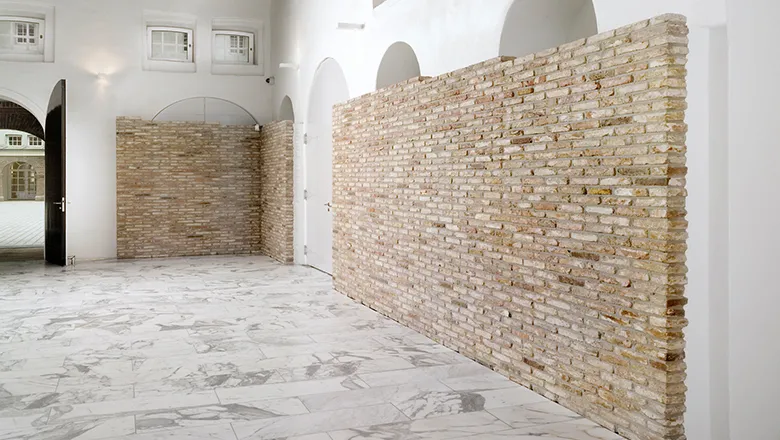Bringing back the ballast an art work consisting of a brick wall representing the ballast in the cargo holds of Dutch trading ships has been part of the museum's 'furniture' since 2011.
The story behind Nathan Coley's artwork
This brick wall is a project by British artist Nathan Coley (Glasgow, 1967). He was inspired by ballast in the cargo holds of the Dutch trading companies VOC and WIC’s ships. These ships carried far fewer goods on their way to destinations in Africa, Asia and America than they did on their return journeys. Instead, bricks served as ballast to stabilise the partly empty ship.
Full of colonial products, the ships sailed back to the Netherlands. The bricks were left behind in port cities like Galle (Sri Lanka), Paramaribo (Suriname) and St Eustatius (Dutch Caribbean). They were often used locally to build forts, warehouses, gatehouses, houses and churches.
In 2011, 6,000 seventeenth-century bricks travelled in a sea container from the Netherlands along several ports of the old colonial trade network. There, the historically left behind bricks were added to the cargo. These ballast bricks were then used to build this wall at the museum. In this way, Coley gives shape to the 'weight' of colonial history and shows the ballast of the Dutch past continuing into today's society.
Find Bringing back the ballast In the north hall towards the jetty, where the East Indiaman Amsterdam and the Royal Barge are located.

Bringing back the ballast (2011)
By the Scottish artist Nathan Coley (1967), on show in the north hall of the National Maritime Museum (Het Scheepvaartmuseum).